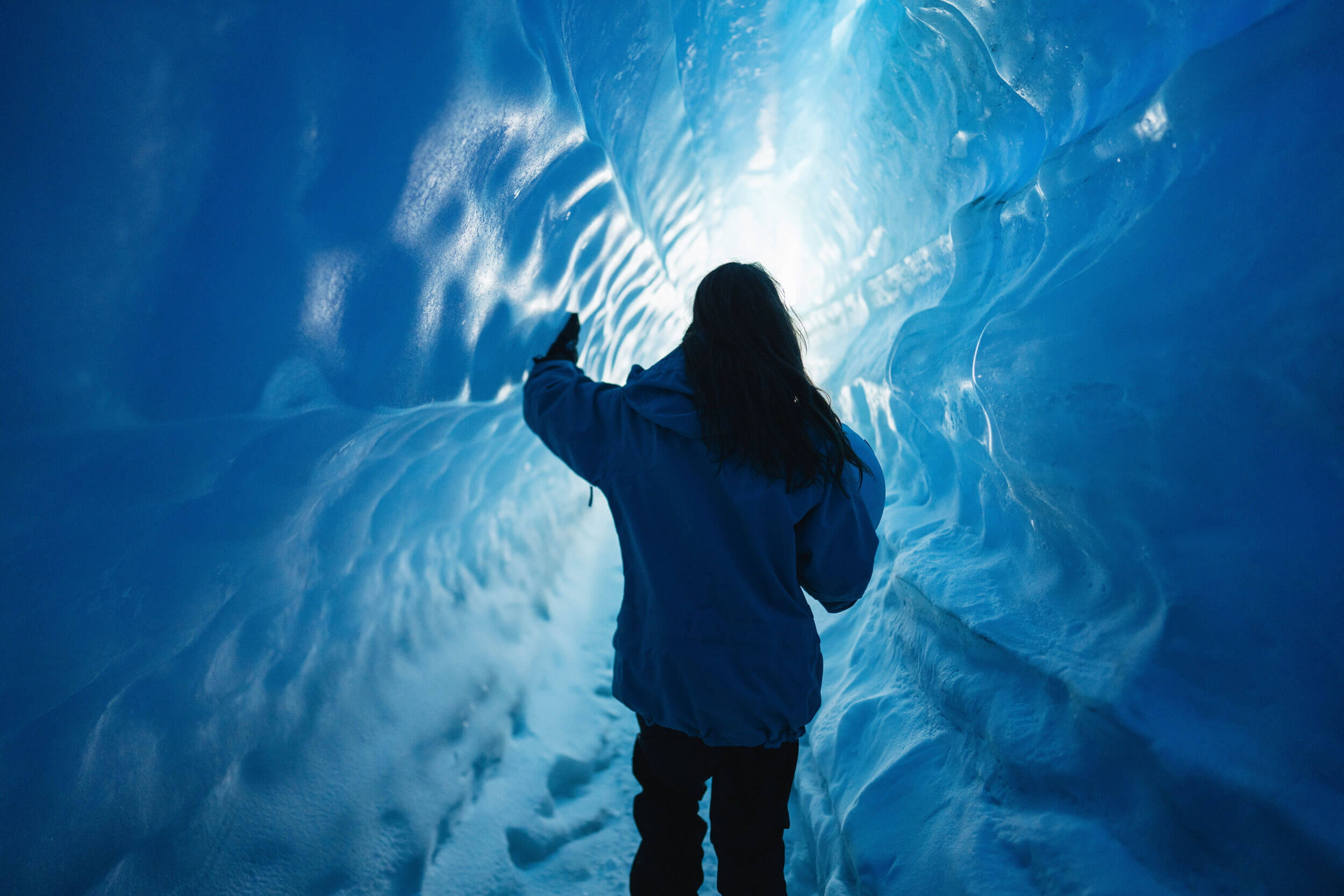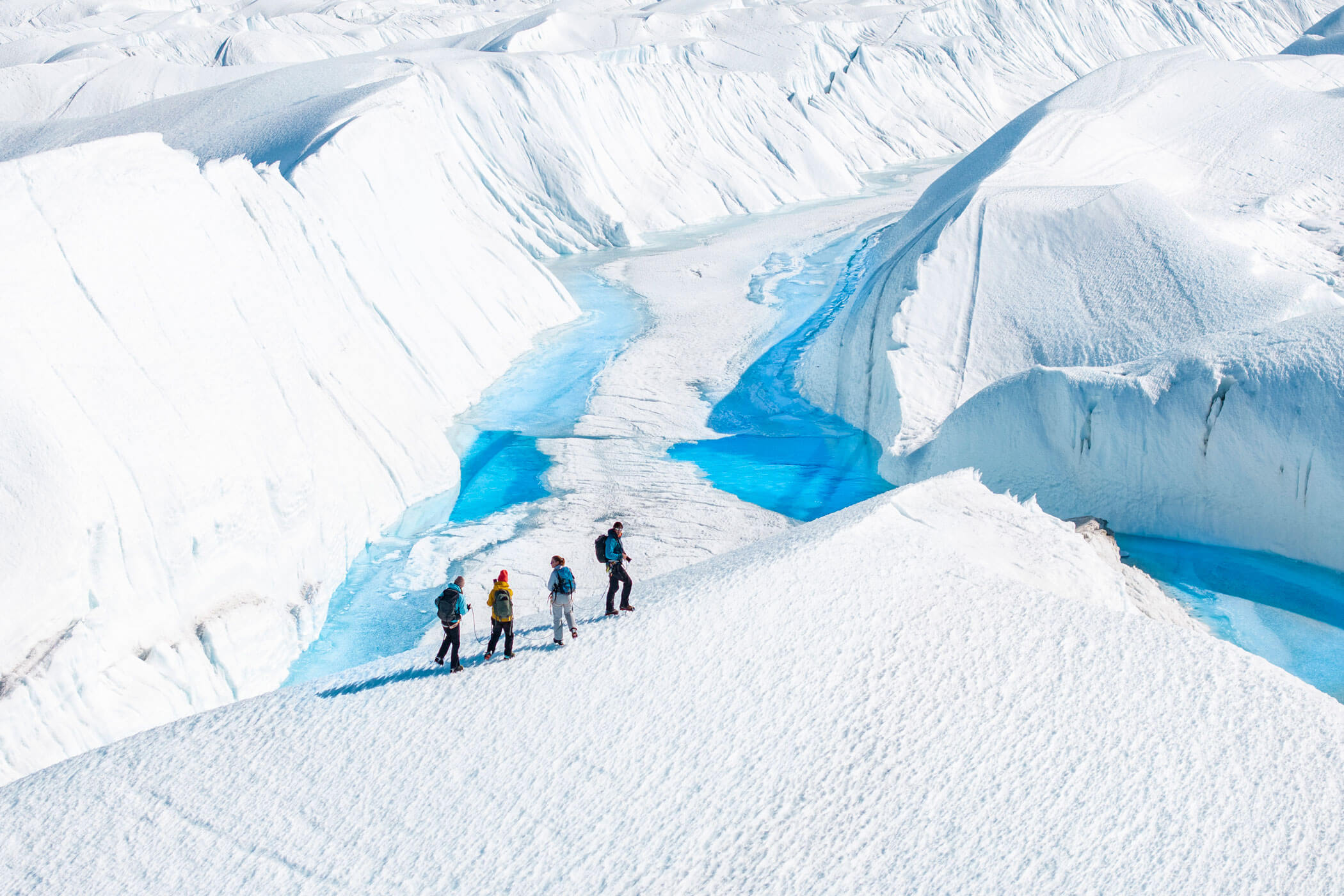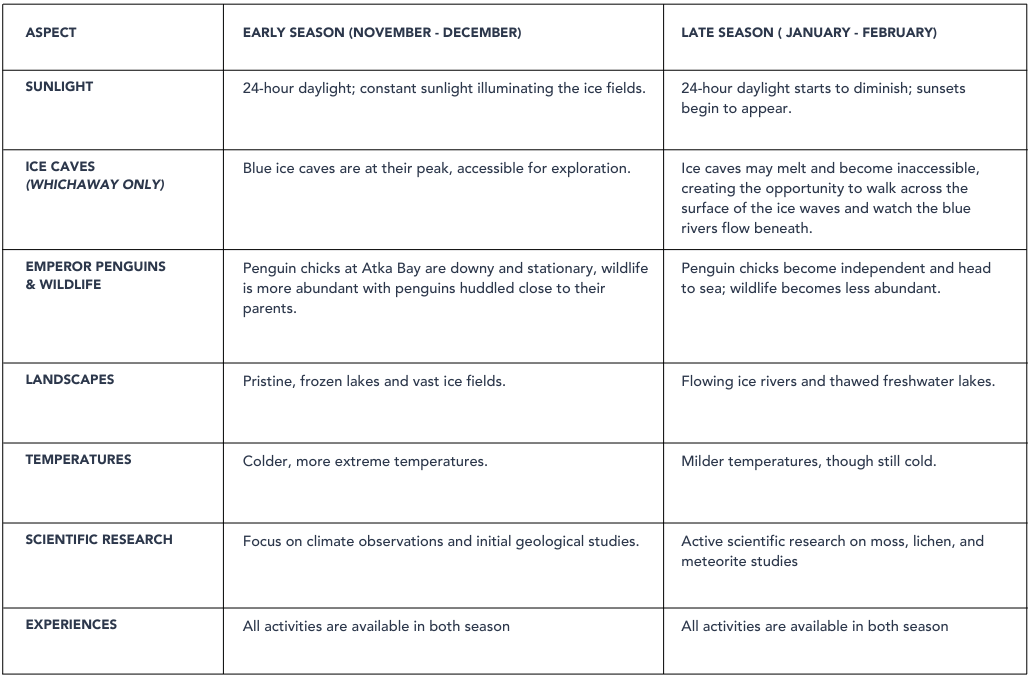Witnessing Antarctica’s Seasonal Transformation
Each September, after 6 months of darkness and some of the harshest winds and temperatures on Earth, the sun begins to make an appearance on the 7th continent; this light transforms the dynamic Antarctic terrain.
As a land of extremes, the landscape naturally evolves from vast white plateaus to spires of rock and mountains piercing the glacier. Echo and Whichaway offer a front-row seat to the changes wrought by the turning of the seasons, providing a unique lens through which to experience the frozen frontier. As the austral summer begins, the world surrounding the camps is locked in an icy embrace. Frozen lakes stretch before you, and the entire landscape is bathed in 24-hour sunlight, casting a brilliant glow over the pristine wilderness.

Exploring Antarcita’s iridescent blue ice caves
November/December—The Awakening of the Icy Wilderness
Early in the season, one of Antarctica’s hidden treasures reveals itself—the iridescent blue ice caves. These shimmering caverns, accessible only in the early months, offer a glimpse into a frozen world that feels otherworldly. As sunlight refracts through the ice, the caves glow in ethereal shades of blue, inviting exploration before they start to melt with the sun’s increasing warmth.
This period is also marked by the presence of emperor penguin chicks at Atka Bay. Both our camps provide an access point to this remote region, and early in the season is when the penguin colony is at it’s largest. The chicks, still covered in down, are relatively immobile, huddled close to their parents, offering a rare chance to witness this fragile stage of life.

Young emperor penguin chicks at Atka Bay—accessible from both Echo and Whichaway
Operating in such a pristine environment, conversations around climate change naturally arise amongst guests. We have an unwavering commitment to minimising our operational footprint with solar power systems harnessing the endless sunlight to keep operations off-grid. In this isolated wilderness, the silence is profound—offering a unique connection to the raw power of nature.
January/February—An Ever Changing Landscape
As the season progresses, Antarctica’s interior begins to show its dynamic side. What was once a frozen landscape surrounding Whichaway transforms into flowing blue rivers, with thawed lakes shimmering under the sunlight. This is a time of awe, as the dramatic environmental shift reveals the true power of nature’s cycles.

Ice waves slowly transform into flowing ice rivers
At Atka Bay, the emperor penguin chicks that were once stationary have gone through a ‘moult’ and are now mostly sleek and independent, with their waterproof feathers evident. The colony begins to disperse as the penguins head off to the open sea in search of food, marking the end of their time on land. The late season brings a quieter atmosphere, but in that stillness, there’s a deeper sense of connection to the wilderness.
One of the season’s most spectacular phenomena is the emergence of breathtaking sunsets in the last week of January, a rare sight after months of 24-hour daylight. The sky is painted with golden-pink hues, casting a warm glow across the ice fields and reflecting off the freshwater lakes. It’s a moment of pure magic, a fleeting beauty that enhances the already surreal experience of being in Antarctica.

24-hour daylight gives way to the setting sun as Antarctica heads into winter
Late in the season, the region’s geological wonders come into sharper focus. For guests at Whichaway, there is the added privilege of being surrounded by unique rock formations and freshwater lakes that make the area ideal for scientific research. Scientists from around the world, including teams from SAEF (Securing Antarctica’s Environmental Future), come to study the region’s rare geology, search for meteorites, and monitor the growth of moss and lichen—plants that manage to thrive in this extreme environment. Guests have the unique opportunity to engage with these scientists, gaining insights into how research here could inform future conservation efforts.
Early vs. Late Season Antarctica—a comparison

Becoming an Antarctic Ambassador
Whether you visit during the early months, when the land begins its gradual thaw, or in the late season, when Antarctica’s quiet strength is fully realised, your experience will leave an indelible mark. We offer more than just a journey to the farthest reaches of the planet and provide a window into the delicate balance of this wilderness. Each visitor becomes an ambassador for Antarctica. We hope all our guests take home a renewed sense of responsibility to protect this fragile landscape for generations to come.